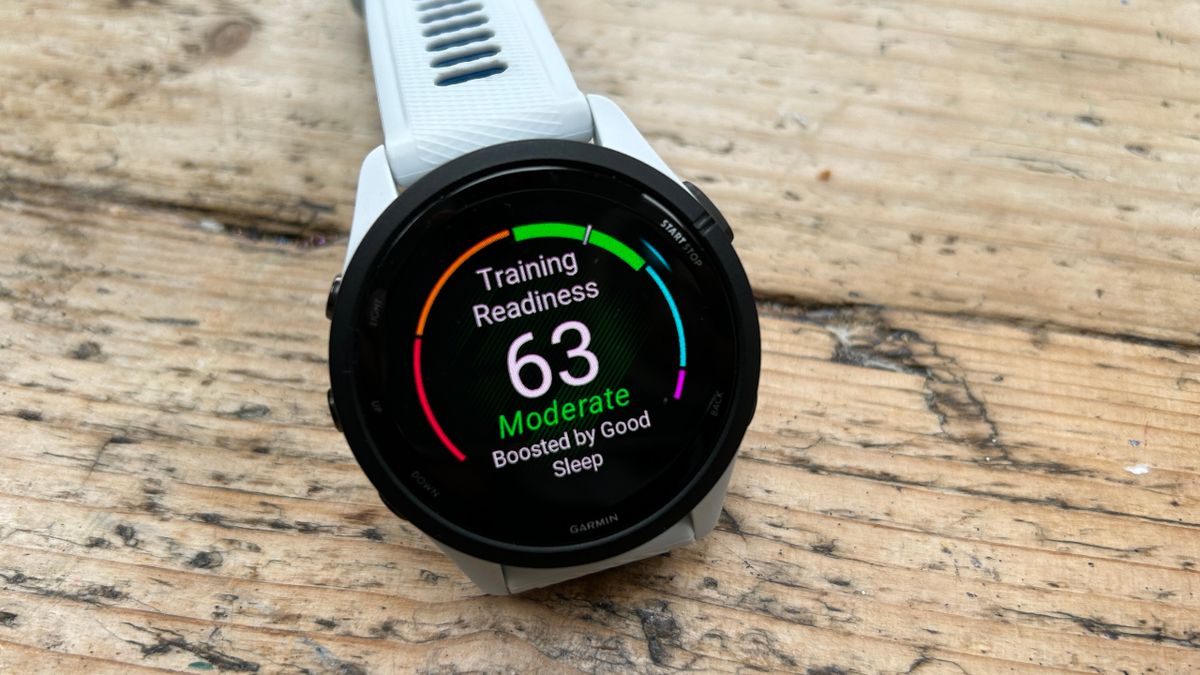The Garmin Forerunner 265 has launched today and the big news is that it features a bright AMOLED display, rather than the transflective memory-in-pixel display that is used on most of Garmin’s best sports watches, including the Forerunner 255.
There are other updates on the watch, too, with the biggest being that it has Garmin’s training readiness feature, which tells you how ready you are to train at any given moment based on factors like your recent sleep and training load.
A smaller update is that the Forerunner 265 can also track some running dynamics stats from the wrist, like ground contact time and stride length. In the past you needed an accessory like the Garmin HRM-Pro Plus heart rate monitor to get most of the running dynamics stats.
These upgrades to the watch don’t come cheap, however, with the Forerunner 265 costing $449.99 in the US and £429.99 in the UK, compared with $399.99/£349.99 for the Forerunner 255 Music.

Is it worth the upgrade, then? The AMOLED display is excellent. It’s bright and easy to read in all conditions, and improves the user experience considerably. I’m also a fan of training readiness as an easy stat that condenses all the analysis the watch does into something you can check quickly to get an idea of how fit you are to train. Garmin should have brought readiness to the 255 as a software update, but they haven’t, so it is an incentive to upgrade.
It’s not all good news with the new watch, though. Along with the price rise, you also have to accept shorter battery life with the Forerunner 265 because of its AMOLED screen. The Forerunner 265S actually lasts longer than the Forerunner 265 because it has a smaller screen, but both watches need charging more regularly than the Forerunner 255.
| Row 0 – Cell 0 | Forerunner 255 | Forerunner 265 | Forerunner 265S |
| Smartwatch mode | 14 days | 13 days (5 days always-on) | 15 days (5 days always-on) |
| GPS-only | 30 hours | 20 hours | 24 hours |
| Multi-band GPS | 16 hours | 14 hours | 15 hours |
| GPS + music | 7 hours | 7 hours | 7.5 hours |
With real-world use the Forerunner 255S lasted me just shy of a week when using it to track runs every day with multi-band GPS enabled. The Forerunner 265 has so far been lasting me four to five days in my testing, but I’m running much less at the moment and also haven’t been able to connect it to my phone, and receiving notifications on the watch will reduce battery life. I’d expect it to last around three to four days with the always-on screen enabled, so a fair drop-off from the Forerunner 255.
I’ve not been able to test the new running dynamics measured from the wrist on the Forerunner 265 yet, since they don’t seem to show without access to Garmin Connect, but overall the choice whether to upgrade comes mainly down to the screen. The AMOLED display is excellent, but not essential and, aside from not having training readiness, the Forerunner 255 is as good as the 265 in every other way – with longer battery life and a lower price.
If you won’t miss the bright screen, the 255 is an easy pick, or you could even go for the older Forerunner 245 if just a runner. The 245 doesn’t have a multisport mode or multi-band GPS, but is still one of the best running watches, and much cheaper than the newer Forerunners.
